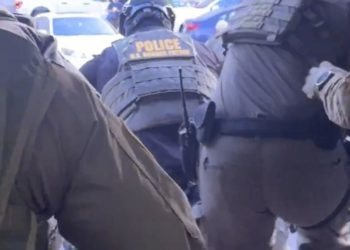Cincinnati viral beating bodycam shows cops at scene of brutal fight as six arrested face new charges
Police have released new body camera footage showing the moments officers responded to the viral downtown Cincinnati beating that left six people...
ICE Deported Him. His Father Heard Nothing for Months. Then, a Call.
The last time that Wilmer Gutièrrez had heard from his son, he was in an immigration detention center in Texas,...
How Ali Sethi Spends His Day Getting Ready for a Music Tour
Though Ali Sethi started out as a writer, music is where he found his calling. In 2022, his Punjabi banger...
LAX travelers potentially exposed to positive measles case
Los Angeles County health officials are investigating a confirmed case of measles linked to an international traveler who was infectious...
Zelensky Rejects Trump’s Suggestion That Ukraine Swap Territory With Russia
President Volodymyr Zelensky of Ukraine on Saturday flatly rejected President Trump’s proposal that a peace deal between Ukraine and Russia...
Arizona adds $5M to program that helps 1st-time homebuyers
PHOENIX — After being introduced in January 2024, the Arizona Is Home program — endorsed by Gov. Katie Hobbs —...
MMA star’s miracle faith awakening: Ben Askren finds Christ after defying death by surviving double lung transplant
Former UFC fighter Ben Askren’s toughest fight wasn’t inside a UFC cage — it was in a hospital bed, clinging...
Trump admin directs federal agencies to delete employee COVID vaccination records: ‘Must be expunged’
The Trump administration on Friday ordered all federal agencies to eliminate any records related to workers’ COVID-19 vaccination status, noncompliance...
WGA Toss Out Park Chan-wook & Don McKellar For Writing On HBO’s ‘The Sympathizer’ During 2023 Strike
The Robert Downey Jr. produced and starring The Sympathizer came and went last year with a lot less fanfare than...
Home Depot de Los Ángeles fue allanado dos veces en un día. Los críticos afirman que los agentes de inmigración están desobedeciendo una orden judicial.
Agentes federales detuvieron a jornaleros afuera de un Home Depot en Van Nuys durante dos redadas el viernes por la...

















